Featured Articles
Tim Bradley's Long Mechanical Journey

By David A. Avila
While Tim “Desert Storm” Bradley sat comfortably chatting about his changes in fighting style it reminded me of the journey he began many years ago at an outdoor venue in Corona.
It was August 2004 when Bradley first stepped into a prize ring in the city of Corona, a town that boxing historians know brought the world Manuel Ortiz, perhaps the greatest bantamweight in the history of the sport.
During Bradley’s pro debut, under the hot summer sky, it was obvious that he possessed speed and athleticism above the norm. But his style was amateurish, featuring plenty of running, flashy combinations and a Sugar Ray Leonard type of showmanship. Fans were not pleased.
“When we first saw him we realized he was a diamond in the rough,” said Ken Thompson, president of Thompson Boxing Promotions.
But each fight Bradley adapted more pro elements to his game under the tutelage of trainer Joel Diaz, a former prizefighter who fought for a world title. The Diaz style of boxing focused on the boxer/puncher style that he and his brothers Antonio and Julio Diaz used in their careers. It was an effective method of attack for the pros.
“He was improving in every single fight,” said Thompson who promoted Bradley’s first 27 pro bouts.
Fight by fight the Palm Springs prizefighter began absorbing the pro boxing style and fans began to appreciate it at the Doubletree Hotel in Ontario, Calif. They began to talk about the kid from the desert who was simply too fast and strong for most youngsters he faced in 2004.
Bradley’s first venture outside of the comforts of home came when the next year he was matched against an unknown Brazilian at the downtown Los Angeles Athletic Club. It was to be Bradley’s showcase for L.A. fans.
When the intro music for Bradley’s opponent played, a tall slender Brazilian walked up to the ring. He looked to be six or seven inches taller than Bradley and his record was advertised as no wins and one loss; in fact he had seven wins and one loss. It was hidden from the matchmaker.
Up to that moment Bradley had breezed through six opponents. But on that evening on July 2005, the Palm Springs fighter would be tested to the fullest.
Brazilian lesson
The historic L.A. Athletic Club dates back to 1880 and its members included legendary power brokers like Henry Huntington, Edward L. Doheny, Charlie Chaplin and Colonel Harrison Otis whose family then owned the L.A. Times.
Bradley quickly found himself in a firefight that night for the first time in his professional career. Before that his natural athleticism put him miles ahead of previous opponents that were helpless to deal with his speed and agility.
Marcos Andre Rocha Costa towered over Bradley when they were introduced in the boxing ring and stood facing each other. It was almost comical the size disparity between the two boxers as part of the crowd seemed amazed that a young professional fighter would be matched against someone much taller. The more amazing issues would soon follow.
Once the first bell rang and fighting commenced, it was clear that Costa could fight. And one more thing, he was a southpaw with speed and power. Bradley had problems like never before trying to get within the Brazilian’s long reach. Time and time again he tried finding the right timing until he decided to take his chances and withstand fire to give fire.
It worked.
Bradley began catching Costa with punches as he dived in through a windmill of blows. Things were beginning to turn around until suddenly Bradley dove right into a left cross and was slightly staggered. The Brazilian immediately unloaded some more blows and kept on until the bell ended the round. It seemed Bradley was in serious trouble.
Entering the fifth round it was make or break for Bradley who had been hurt. Could he recover from the jolt or would he climb into a shell and try to survive? The answer came quick as the Palm Springs boxer charged the tall Brazilian and unloaded a furious barrage. Immediately he hurt the surprised Costa and followed it up with a vicious assault that finally forced referee Pat Russell to end the fight at 2:15 of the fifth round. Bradley won by knockout against a very good opponent.
“He put his heart and soul into it,” Thompson remembers. “We did not bring him up on ham and eggers.”
It would be the start of Bradley’s journey and the beginning of a string of fights that would lead him into the upper tier of prizefighting.
In most of his fights the Palm Springs boxer was almost always the shorter man in the boxing ring. The year 2007 was the beginning of his televised bouts and ended with Bradley facing then unknown Miguel “El Titere” Vazquez of Mexico, who would later reign as a lightweight world champion. Vazquez would be the first of a dozen world champions that Bradley would face and defeat inside the prize ring.
Championship fights
After signing a co-promotional agreement with Gary Shaw Productions, the first world title shot would force Bradley to travel to England to face WBC titlist Junior Witter. Few knew who Bradley was. It’s probable that trainer Joel Diaz was more well-known than Bradley at that time in 2008.
“He had Joel Diaz as trainer from day one. He’s one of the top five trainers in the world,” Thompson says. “He did a remarkable job.”
Witter’s style was perplexing to most that faced the quickster from Nottingham known as “the Hitter.” Bradley blitzed through him with surprising speed. Before the fight most experts felt Witter was too fast, but it was the contrary.
Speed was always Bradley’s primary weapon, yet every time he faced a top tier opponent or a world champion experts felt he was the slower man. It happened quite often and especially against Devon Alexander when they met. Experts claimed Alexander had the speed advantage despite Bradley’s dispatching of Witter, Kendall Holt, Edner Cherry, Nate Campbell, and Luis Abregu.
“We knew he could beat anybody,” Thompson said.
After defeating Alexander, it was a parting of ways between Bradley and Thompson Boxing Promotions. At the time a contract had been signed that would have paired Bradley with Amir Khan and set up a possible showdown with Floyd Mayweather. Bradley chose another path and signed with Top Rank.
“That was the direction — we were going after Mayweather,” said Thompson, adding that Bradley still succeeded under Top Rank. “But Bob Arum is a great promoter.”
Top Ranks road
The chase was on for Bradley to meet Manny Pacquiao. When the Palm Springs prizefighter was introduced to the media at the Beverly Hills Hotel in a small gathering of media, it was voiced by both the promoter and fighter that Pacquiao was the desired target.
Pacquiao was running out of opponents and had just defeated Juan Manuel Marquez in their third encounter. Though it was razor close, another fight with Marquez was not desired. Bradley was chosen and it’s what he wanted.
“First fight was very close. It could have gone either way,” says Bradley. “The first fight I was able to beat Manny and honestly 2012 was one of his best years. He was still top dog.”
But Pacquiao’s fans were incensed and believed the Filipino superstar was robbed. Instead of a rematch Bradley was paired against Russian slugger Ruslan Provodnikov. Bradley was out to prove himself against the fearsome Provodnikov. He won the rousing skirmish by a unanimous decision, but nearly paid with his life. Then despite using his boxing skills to defeat the always dangerous Marquez, a return match with Pacquiao found Bradley trying to go toe-to-toe with Pacman.
“Going back to the Ruslan fight, that fight was brutal and took a lot out of me. That punch that I got from Jessie Vargas really opened my eyes,” Bradley said, and he called Teddy Atlas for a neutral observer’s opinion.
Decision time saw Bradley decide he must change his fighting style again.
“After that conversation I had with Teddy nobody had ever had the knowledge to tell me how to avoid that punch. I said I want Teddy Atlas to train me. My wife was kind of shocked because she knows how loyal I am to the people, to trainers, and to people that have always had my back. I was willing to make that change because it was the right time to make that decision for my sake,” said Bradley at his personal gym last week. “It’s not that I didn’t get the job done with Joel Diaz, he’s a great trainer too. I guess I stopped listening to him and stopped believing in him. We were just going through the motions in the gym.”
When Top Rank announced that Brandon Rios would face Bradley after destroying Mike Alvarado nearly a year earlier, fans were jubilant. It was also announced that Bradley had a new trainer and few could foresee the change in style that would ensue.
“I know I was a five time world champion but I was taking a lot of punishment. To be able to remain in the business and fight a longer fight and to be able to hold my children some day and have all my faculties, that was very important to me,” Bradley said. “My wife said ‘Tim you can’t keep taking these punches, you can’t keep fighting this way.’ And I was, you’re right.”
Mechanical adjustments
Brandon “Bam Bam” Rios has that flair for prizefighting both in and out of the prize ring. He’s a throwback to the 1940s when guys like Rocky Graziano, Tony Zale and Sugar Ray Robinson ruled the boxing world and talked out of the side of their mouth.
When it was first announced more than half believed Rios could wreck Bradley’s change in direction like salt in a gas tank. On more than one occasion Rios bludgeoned his way to victory. Whether it was by a clean knockout or a dirty blood spit affair with elbows, eye gouging and low blows, he always found a way to the victory stand. Could Bradley contend with Rios?
It was a big question when they entered the boxing ring at the Thomas and Mack Center in Las Vegas last November.
Bradley was like a spinning top zipping from point to point with effortless motion until body shots dropped Rios twice in the ninth round and Rios signaled it was over.
“Want to know why he quit? Because he was getting beat every round. I was doing everything I needed to do to make him say I’m done,” said Bradley of Rios. “Rios was saying to himself ‘He’s not letting me land that big shot I was looking for.’ That’s all he was looking for…one shot.”
Bradley was within striking distance for himself, but never to allow Rios to strike back. It was a matter of angles and positioning.
Pacquiao is now in the picture again for a third time and Bradley is ready to put his new mechanics to the test.
“I think mechanically I’m a more disciplined fighter now and I’ll have a better chance of beating Manny Pacquiao; just being solid on fundamentals. Most of the guys that faced him that were fundamentally solid gave him problems. Marquez put him on the ground. He’s always set and gave him problems. Floyd, the same thing: Always there, always solid and ready to punch. Erik Morales, same thing. Always solid. Not spooked by what they see. Not spooked by his movement. They know exactly what they’re looking at,” said Bradley of opponents that gave Pacquiao problems and losses. “This time I know exactly what I’m looking at. I know what type of animal he is, what type of fighter he is.”
Bradley feels the adjustments in his fighting style and the insights into Pacquiao’s style pointed out to him by Atlas will change the outcome.
“A lot of that has changed now. I don’t get on both toes as much anymore. I’m a little bit more solid with my stance now. I approach a little bit more flat footed in the ring; I kind of slide around the ring now. There are more little subtle changes than ever before,” said Bradley. “Breaking him down on film, there are four things he does very well. And he does it over and over and over and over. He does them very well.”
It’s a matter of mechanics for Bradley this time.
“This time around I’m clear headed and I know what I got to do,” Bradley said.
-
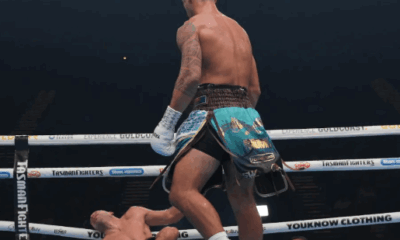
 Featured Articles1 week ago
Featured Articles1 week agoResults from Australia where Cruiser Champ Jai Opetaia Starched Another Overmatched Foe
-
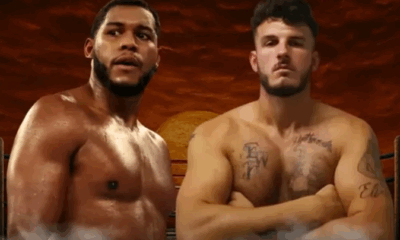
 Featured Articles2 weeks ago
Featured Articles2 weeks agoMichael Hunter vs Eli Frankham: A Strange Match-Up at a Storied Venue
-
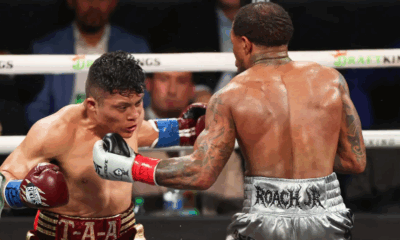
 Featured Articles1 week ago
Featured Articles1 week agoResults from San Antonio where Cruz vs Roach Ended in a Stalemate
-
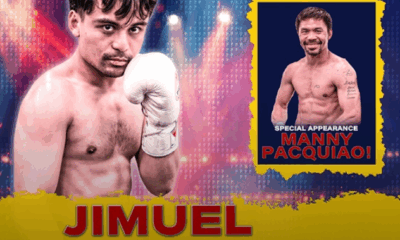
 Featured Articles2 weeks ago
Featured Articles2 weeks agoAvila Perspective, Chap. 353: ‘Pacman’ at Pechanga and More
-

 Featured Articles3 weeks ago
Featured Articles3 weeks agoThis Day in Boxing History: Ali’s Cruel Lesson, Tyson’s Arrival, and Pacquiao’s Masterclass
-
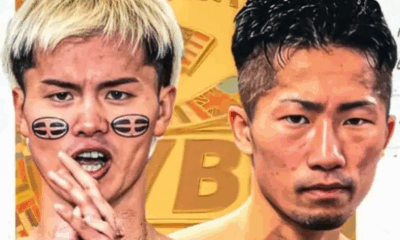
 Featured Articles3 weeks ago
Featured Articles3 weeks agoTakuma Inoue, Brother of Naoya, Wins Another World Title on a Monday in Japan
-
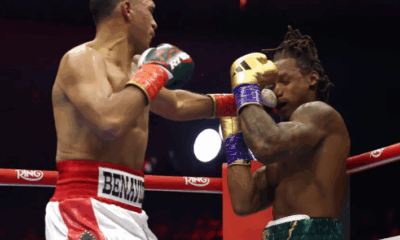
 Featured Articles3 weeks ago
Featured Articles3 weeks agoBenavidez, Haney, ‘Bam’Rodriguez, and Mason Bring Home the Bacon in Riyadh
-
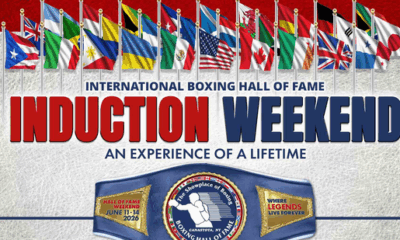
 Featured Articles1 week ago
Featured Articles1 week agoGennadiy Golovkin, Nigel Benn, and Antonio Tarver named to the Boxing Hall of Fame















